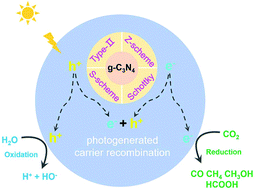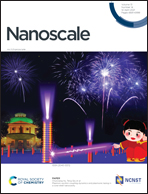Recent advances in g-C3N4 composites within four types of heterojunctions for photocatalytic CO2 reduction
Abstract
Studies of photocatalytic conversion of CO2 into hydrocarbon fuels, as a promising solution to alleviate global warming and energy issues, are booming in recent years. Researchers have focused their interest in developing g-C3N4 composite photocatalysts with intriguing features of robust light harvesting ability, excellent catalysis, and stable performance. Four types of heterojunctions (type-II, Z-scheme, S-scheme and Schottky) of the g-C3N4 composites are widely adopted. This review aims at presenting and comparing the photocatalytic mechanisms, characteristics, and performances of g-C3N4 composites concerning these four types of heterojunctions. Besides, perspectives and undergoing efforts for further development of g-C3N4 composite photocatalysts are discussed. This review would be helpful for researchers to gain a comprehensive understanding of the progress and future development trends of g-C3N4 composite heterojunctions for photocatalytic CO2 reduction.

- This article is part of the themed collection: Recent Review Articles


 Please wait while we load your content...
Please wait while we load your content...